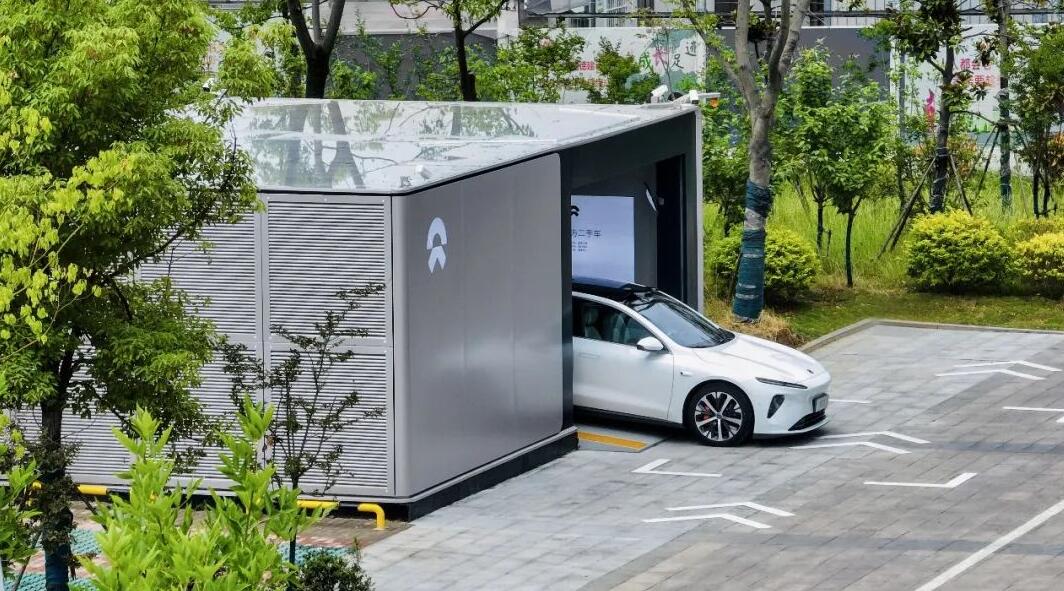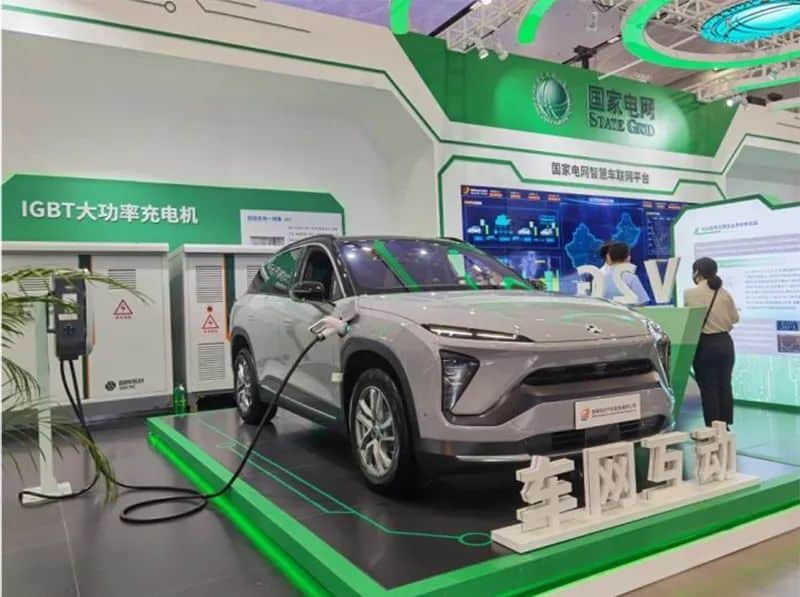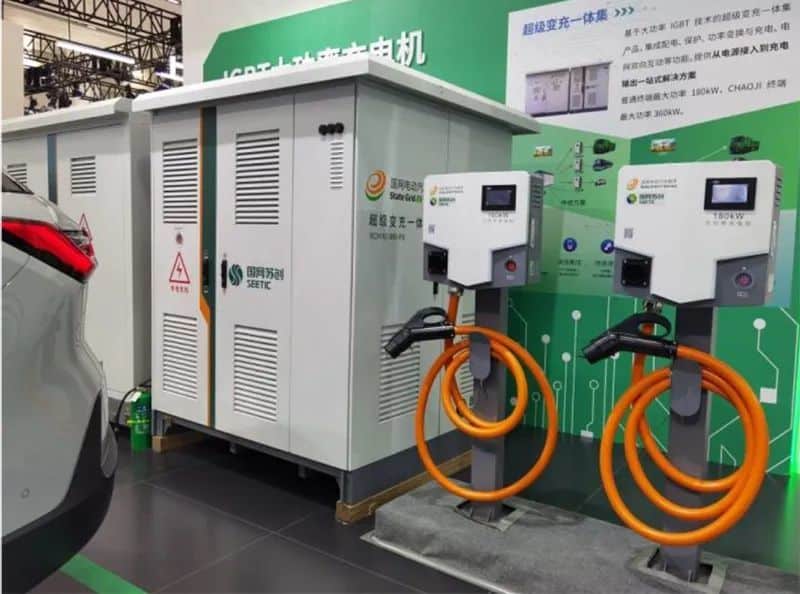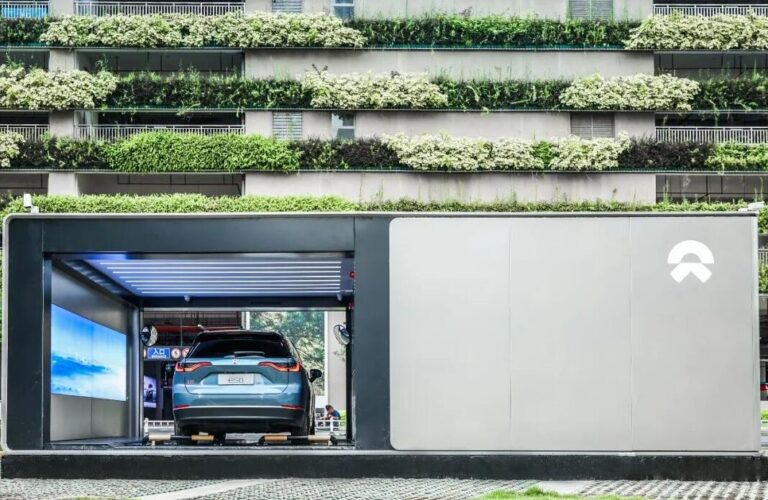Nio's third-generation battery swap stations are nearing the end of development and are being tested and will be introduced in detail by the end of the year or early next year, the company said earlier.
(Image credit: Nio)
Nio will put battery swap stations with the ability to discharge power to the grid into trial operation, the company said today.
The electric vehicle (EV) maker mentioned the plan in an article about its more than 100 battery swap stations participating in initiatives to reduce peak load on the grid in their cities.
Nio Power will do what it can to help the grid achieve safer and more stable operations and help society reach its carbon peak and carbon neutrality goals, it said.
The company did not provide details on the new battery swap stations, but it appears to be referring to its third generation of such facilities.
At Nio Power Day on July 6, the company previewed the third-generation battery swap station, saying it would have a larger capacity and more flexible layout.
Nio's third-generation battery swap station is nearing the end of its development and is being tested and will be introduced in detail by the end of the year or early next year, Nio co-founder and president Qin Lihong said at the time.
However, some of the details in Nio's article today seem to refer to the capabilities of the new battery swap stations.
Nio's current battery swap stations can store up to 13 batteries, and measurements show that each station has 600-700 kWh of energy storage capacity at any given time, the company said in today's article.
Each of the other 10-11 batteries can be discharged to the grid for 5-10 minutes while users replace the batteries they need.
These stations can take instructions from the grid at any time to discharge or boost charging power to the grid, with little disruption to the user's normal battery swap service, Nio said.
In fact, in addition to battery swap stations, EVs are considered one of the energy storage tools, although this feature is not currently evident.
During the 2021 World New Energy Vehicle Congress (WNEVC) event on September 16, 2021, in southern China's Hainan province, State Grid demonstrated a device that allows EVs to discharge to the grid.
State Grid called the device a "supercharging cluster" with power distribution, protection, power exchange, charging, and reverse charging capabilities. An Nio vehicle was used in the demonstration, as some images show.
The device's primary function is currently to charge EVs though, with a maximum power of 360 kilowatts.
"EVs are like giant sponges that can store electricity," State Grid chairman Xin Baoan said in a speech at the time.
From the grid's perspective, EV charging is flexible, behavior can be guided, and patterns can be predicted. With the widespread use of V2G technology, the ability of EVs to deliver power to the grid in reverse offers huge potential for energy storage, he said.
The regulated load for EV charging in China is expected to reach 30 million kilowatts by 2025, accounting for 2 percent of electricity use and providing energy storage resources that are expected to exceed 150 billion kilowatt hours, he said.




